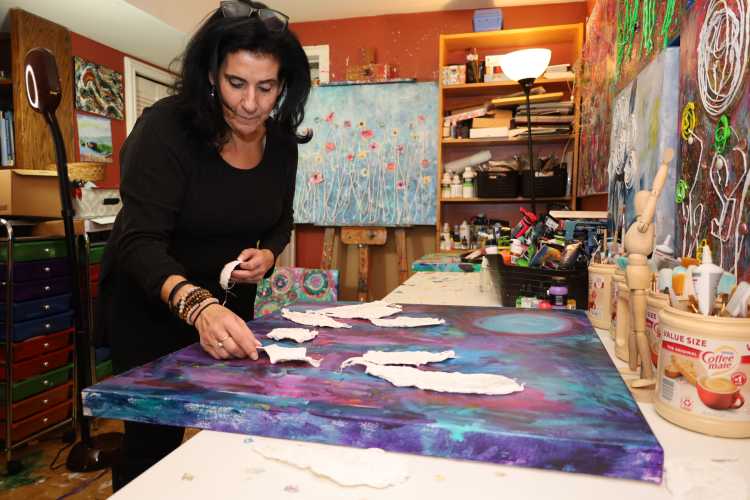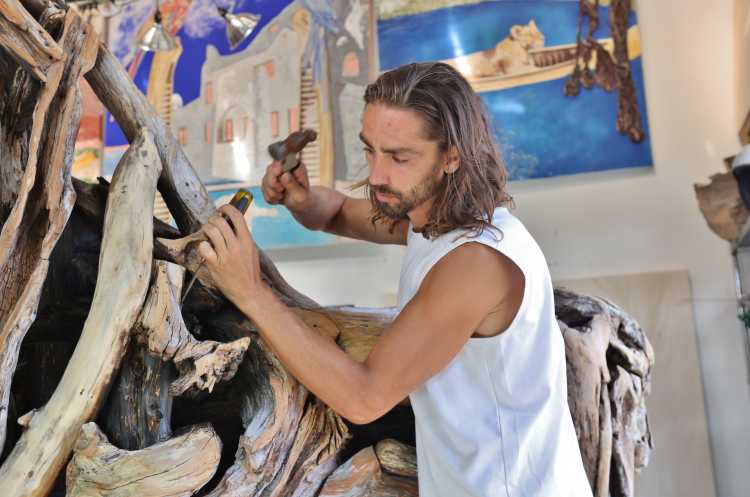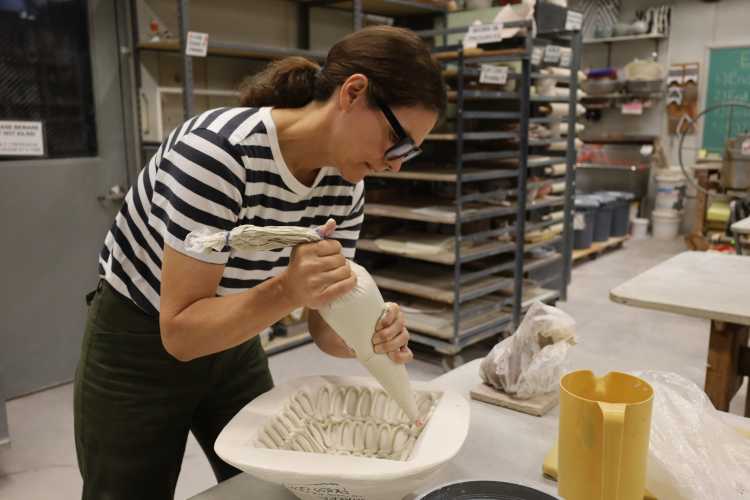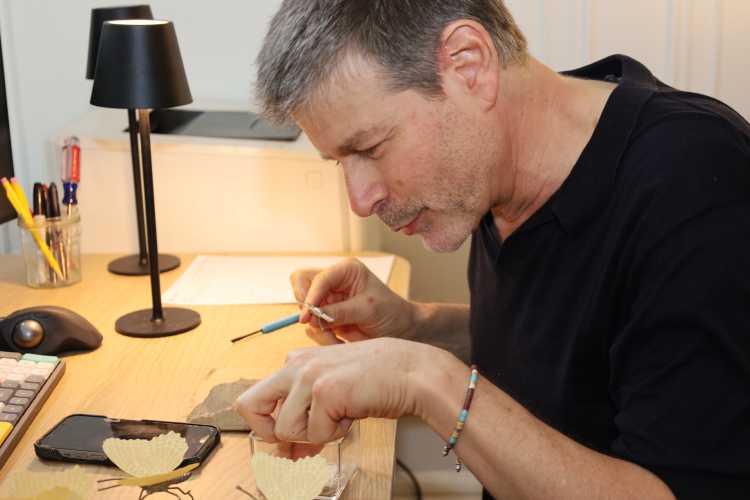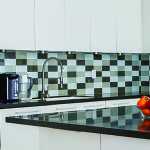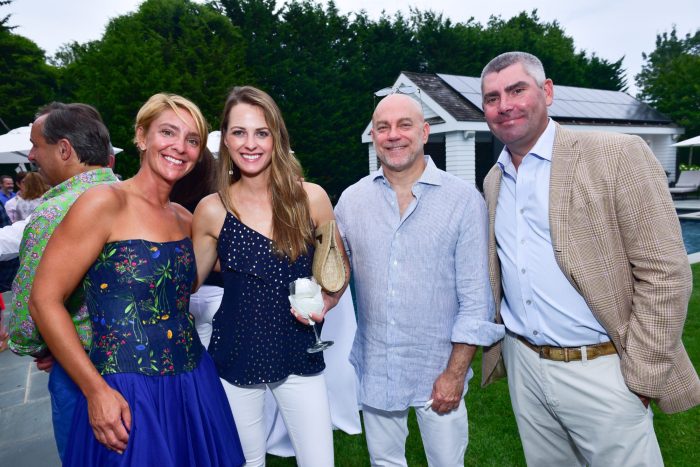In an industrial space in Greenport, a teardrop-shaped chair hangs from the ceiling. It sways ever so slightly from movement in the old oyster barrel factory. The light from the large window shines through the slats of curved bronze, this particular chair’s material.
The eye is drawn up to where the slats meet and a bronzed leather strap attaches the chair to the ceiling joist. It looks more like a piece of art than a place to plunk yourself down, and yet it is a functional chair, even if most are drawn to it as a timeless, decorative piece.
Michael Javidi calls his design “Le Nid,” which means “the nest” in French. It does have the feel of a nook. The predecessor to the bronze teardrop-shaped chair, one made of hickory, hangs nearby and has an especially ethereal quality.
The original Le Nid may look delicate, but the strength of the wood, its composition and the copper custom rivets that tie it all together, allow the chair to hold 300 pounds.
“It’s super, super, super strong, but also super light,” Javidi says. “There’s a point, if you sit in it, pull your legs up and get it to stay still, it’ll register your heartbeat and your breathing because it’s so light.”
The idea for Le Nid came over time. Javidi has always worked with his hands, first as a chef before enrolling in a two-year furniture-making program at the prestigious North Bennet Street School in Boston, America’s oldest artisanal trade college.
A Smithtown native, he left Long Island when he was 18, but when he discovered the “magical” North Fork after his parents moved to Aquebogue, he was lured back to the island. He and his then-wife decided to move to Greenport to raise their family and he took a job with Wooden Boatworks. During his time with the company, he restored old boats and helped build two 50- foot wooden sailboats. The time came when Javidi felt the tug of creativity and felt he should branch out on his own.
Without an idea of exactly what he would create, he rented an old barn in Peconic in 2019 as a studio. “And I just started.”
“People asked me what I was going to do. And I said, ‘I’m not quite sure,’” Javidi remembers. “I knew I didn’t want to make plywood boxes, but I just started designing stuff. And I found that I had a knack for designing stuff.”
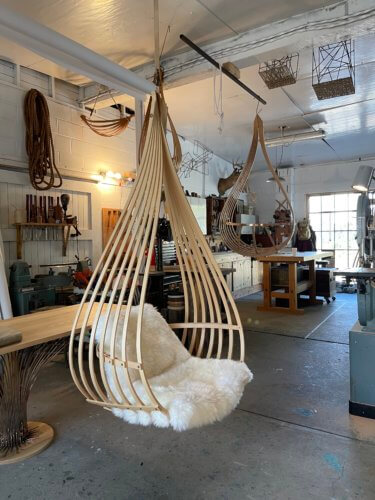
All he knew was that he wanted to do something unique. “I can make a Queen Anne highboy, which is like a very complicated English piece of furniture, but that’s been made for hundreds of years,” he says.
“Going into something with no clear direction, there’s some excitement with that,” Javidi says. “It was a little nerve- racking as well, but then it just started clicking.”
One idea morphed into another and then another.
“These chairs were actually based on a basket. You know, one of the first things I made was that basket over there,” he says, pointing to an artistic wooden container with open slats hanging from a rafter. Slowly, the design grew into what he called a swing, after a friend suggested it looked like one. “It’s not a very marketable product,” he says of the swing, so he transformed it into a chair.
The first one he made wasn’t quite big enough for him — Javidi stands 6 foot 6 inches tall. He figured out a way to make it long enough to accommodate his stature. He chose hickory wood for its strength and flexibility.
“Traditionally, it has been used for steam bending and for strength, but it doesn’t like being outside — and everybody wants to put these outside,” he says of the original chair. “So I came up with the bronze one.”
Working on boats exposed him to many different building materials and building techniques. “You’re kind of doing the impossible — you’re building a wooden boat that goes in the water. We were working on 100-year-old boats, rebuilding them and fixing them, and so there’s a lot of bronze involved,” he says. “It takes a long time for it to disintegrate in water, where steel will just rust.”
The bronze chair is quite comfortable as it slants backwards. Javidi has designed a cushion with the help of his ex-wife, who is a seamstress.
His design process is very much material- driven. “I’ll take a material and I’ll just keep working it and seeing different steps of it,” he says. “I get a lot of ideas — ‘aha’ moments — from the mistakes. When something goes wrong, when the plan goes wrong, then it’s like, ‘Wow, well that’s nice. That’s easier. That’s more beautiful. That’s stronger. That makes a lot of sense.’”
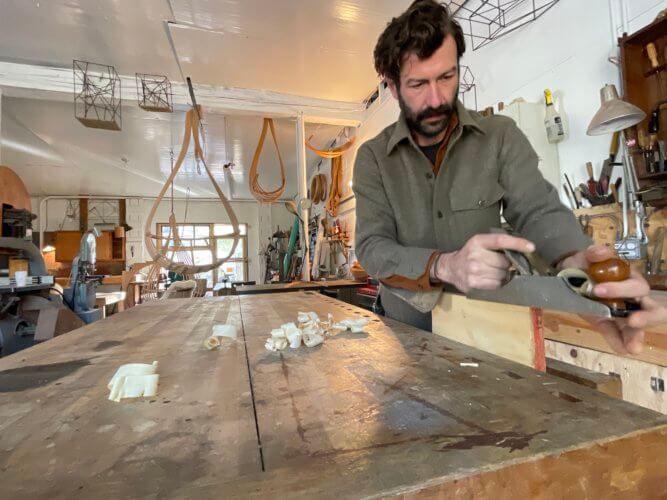
He likes working with metal and welding. “I want to get something to start melting bronze in here and doing casting and stuff. I’ve been a craftsperson for so long that all my cumulative knowledge and experiences, it’s opened doors where I can just pick up a new material and work with it.”
Javidi’s first idea for the seat was leather, so he tried his hand at leatherwork. He also recently started weaving. “Someone asked me, ‘How do you know how to weave?’ I was like, ‘I don’t really know how to weave,’” he says, adding that he reads books and looks on YouTube for instructional videos.
“What keeps it interesting is learning new things. I’m not really interested in just doing wood or just doing metal or just doing leather. Just building these skills makes it fun,” he says.
“I’ve been working with my hands for 20 years, from cooking to furniture to boats, back to furniture, that it’s just being able to do precise movements. It’s just my hands and my mind. I’ve just been doing it so many times. It doesn’t matter if I’m working with metal or wood or leather or whatever — they’re kind of the same precision motions.”
Standing before the first chair he completed, Javidi says it was a bit of luck that he ever made another one. When he first started in his studio, he was using hickory lumber that had already been steamed. “I was getting like 80% breakage,” he says. “I’m lucky this first batch didn’t break ‘cause I would quit right there.”
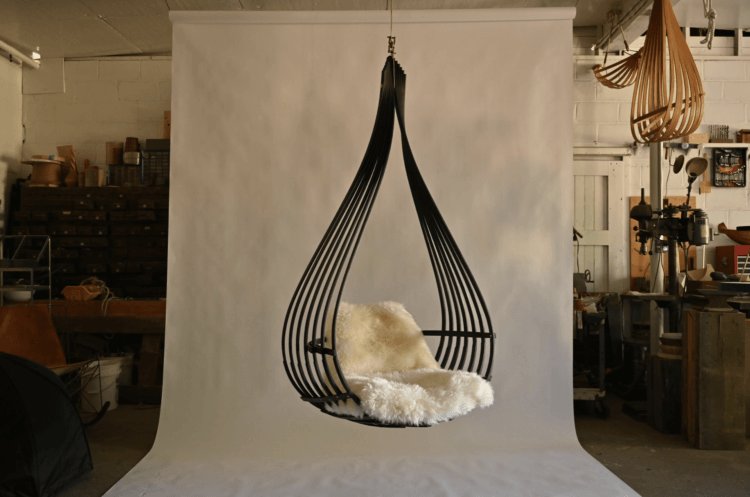
The commercial steaming process affected the lignin, which is especially important to the formation of wood. When he was trying to bend the wood, it would just snap. He wound up having to purchase wood that had never been kiln-dried and
his breakage percentage dropped to zero. Javidi says he continues to perfect the process of making these chairs, even though they are already gaining attention and have even been purchased internationally. He now sands all the wood before he puts it together so he only has to sand it one more time after it’s assembled. He is not much for sketching his design and specs, but by the 10th chair he figured he ought to finally scribble down measurements so he doesn’t have to keep taking them. They are etched on a cabinet door in Javidi’s new space.
His shop has several hanging chairs in different colors, some with the natural hickory color, another in a darker brown with a dark leather seat. He just blackened one with India ink too and it’s striking. Javidi has also switched up the material altogether.
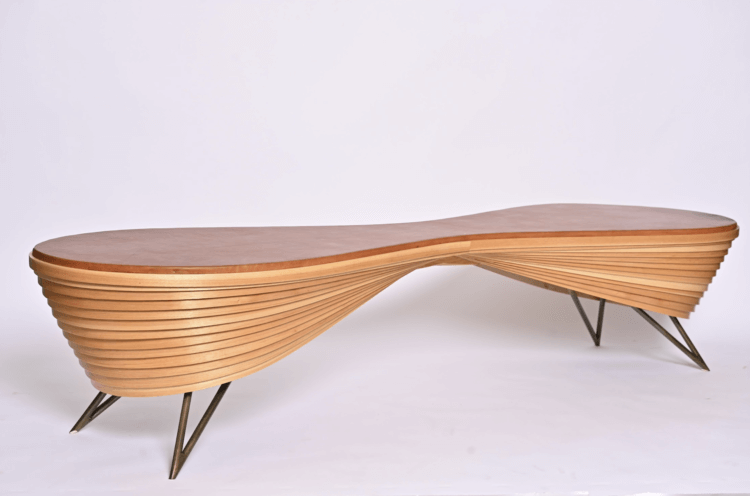
While he started in the barn in Peconic, he moved to a larger space, the old barrel factory along the railroad tracks in Greenport, last year. A wood-burning fireplace warms the workshop, the high ceilings are perfect for hanging the chairs and there is lots of space to spread out — and for his dog Moses to mosey around.
“When I do get stuck on something, I can just move to something else,” Javidi says. In his other space, he would have to break down a set up to move on to something else. “I have an idea, I throw it together really quick. I step away from it and then I go back to it. This space supports that,” he says.
He has supplemented his income with custom work as he honed his design. “Now I’m headed towards just my own work,” Javidi says. He set up a booth at the International Contemporary Furniture Fair at the Jacob K. Javits Convention Center just this past week to showcase Le Nid.
A few custom pieces were still in his shop, such as a wooden table with a bronze base that resembles a bundle of wheat. “That was kind of the idea. I think it came out right,” he says.
Several small, minimalist tables with varying bases also adorn the studio. He started making them at the beginning of the year. He went to a Bridgehampton store that shows his chairs and asked, “What do you sell a lot of? That has a good margin?” Tiny tables were the answer. “I’ve sold 26 of these already in three months.”
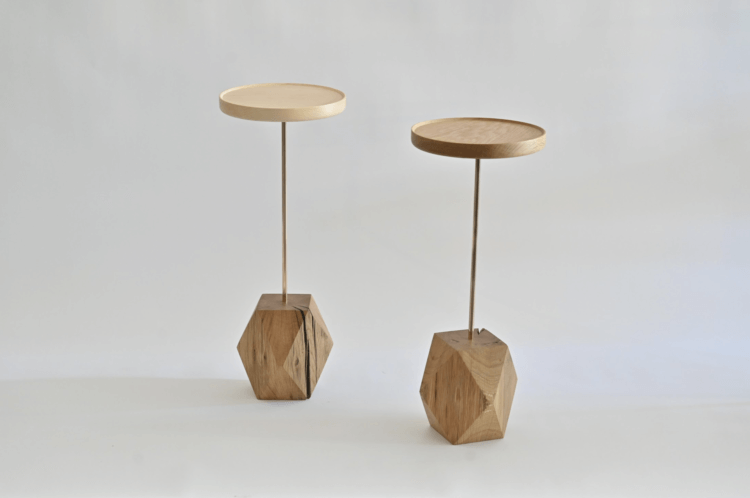
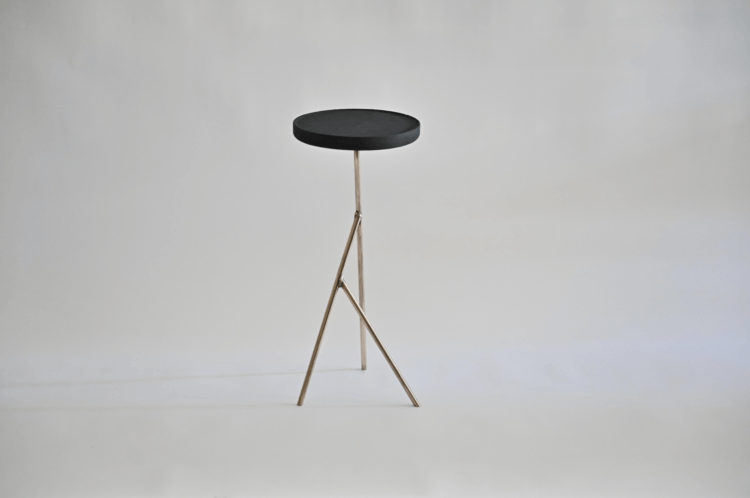
There’s a prototype of a rocking chair Javidi is working on using abstract steel shapes at the base and a basketweave seat. He is also developing a stand for Le Nid.
“I’m finding the negative space is more important than the positive space. The simplicity is where the beauty comes from, because you can add lots of frills to something and make it look, you know, too much. It’s still beautiful. But the true design I think is the negative space.”
This article appeared in the November 2021 issue of Behind The Hedges. Click here to read the digital version.


